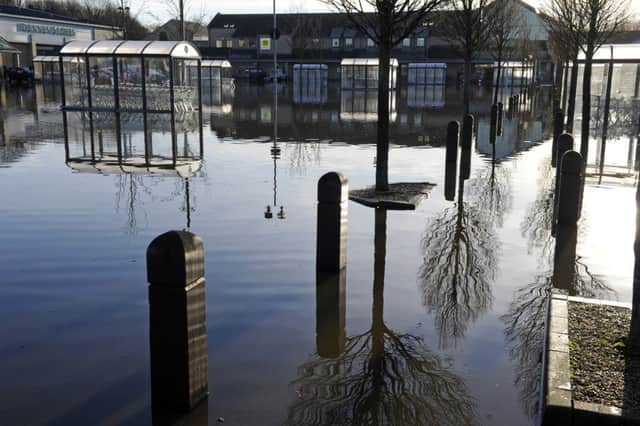Insurance hope for flooded property


The devastating impact of recent storms has cost the insurance industry dear. The latest statistics from the Association of British Insurers show that the average expected payout for each domestic flood claim is £50,000, compared to the 2013/14 average of £31,000. The total spend on customers affected by the damage is likely to be about £1.3billion, although the human cost is even more profound. More than 3,000 families are now in alternative accommodation while repairs are made to their homes and many more are suffering from stress.
“As insurance events go, I think a flood is the worst thing people have to deal with. With a fire you know to call the fire brigade but with a flood you feel completely helpless and then there are the financial implications,” says Martyn Foulds, Senior Claims Manager for Halifax Home Insurance. “Research has shown that you are five times more likely to suffer mental health issues like post-traumatic stress disorder and depression after your home has been flooded. There are long and short-term effects. I was talking to a victim recently who said she got in her car after the flood and couldn’t remember how to switch the headlights on. That kind of memory loss is common.
Advertisement
Hide AdAdvertisement
Hide Ad“Also, people don’t realise how awful flooding is. It flushes out the drains and the rivers and so it is heavily polluted.”
When the water has receded, a property has to be cleaned and dried out before it can be re-plastered. It can take between six and eight months before it is habitable.
Concerns about the property’s post-flood value also adds to the anxiety, especially for those who do not have much equity in their homes. Buyers are wary and there is no hiding the truth. Vendors are legally obliged to fill in a Property Information Form that asks if their home has been flooded, and the questions require detailed answers. If you are misleading you run the risk of being sued.
Lenders also insist that borrowers have building insurance in place before their mortgage is advanced and that can be a big issue in flood prone areas. High premiums can be a deal breaker for buyers.
Advertisement
Hide AdAdvertisement
Hide Ad“Your premium will not necessarily increase significantly if it is the first time you have been flooded, and your property was previously deemed low flood risk,” says David Rochester, Head of Underwriting, Halifax Home Insurance.
However, you will pay big premiums if you live in a high-risk area, usually identified by the Environment Agency flood maps. Officially, no property is uninsurable but sky-high premiums often mean that insurance is not viable.
This situation should improve from April this year when Flood Re comes into operation. The scheme, founded by UK insurers and the Government, allows insurers to pass the flood risk element of an insurance policy into a fund that will pay any claim.
It will help cover the 350,000 homes that are at greatest risk of flooding and will be funded through a levy on all home flood insurance policies. This could cost policyholders an average £10.50 per year extra.
Advertisement
Hide AdAdvertisement
Hide AdHowever, homes built after January 1, 2009 will not be eligible for Flood Re to avoid incentivising unwise building on flood plains. Sarah Cordey, of the ABI, says: “It means an insurer will be able to place the flood element of a policy with Flood Re, making it affordable. The premium will be based on the council tax band of your home, starting at £200 a year.”
If you are struggling with high flood insurance quotes then avoid comparison websites and go to a local broker, who may have helped others in your area, or call insurance companies direct. For those in high-risk areas feeling down about the prospect of selling their home, estate agent Edward Stoyle, of Carter Jonas in York, says that some buyers are happy to accept the risk: “We have handled the sale of a number of mills that flood every year but the buyers were aware of the risks and the owners had designed the properties to withstand water ingress.”
*www.floodre.co.uk; Flood maps, maps.environment-agency.gov.uk